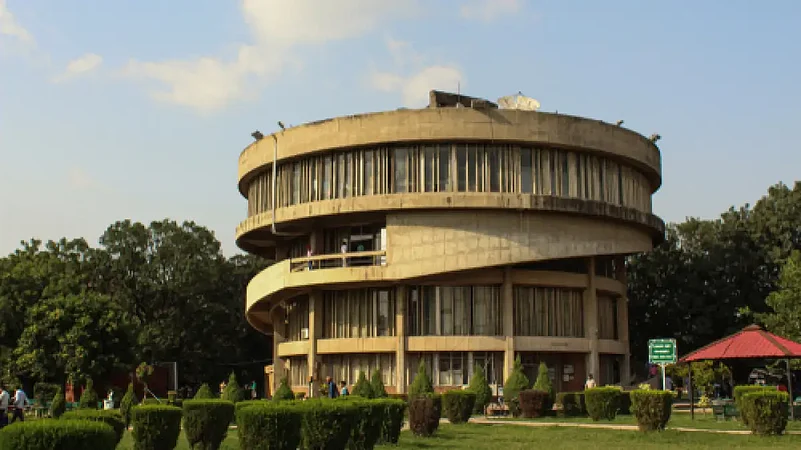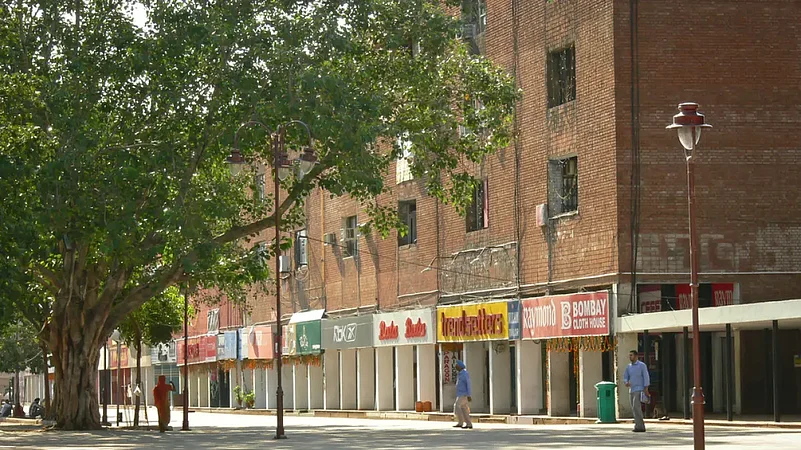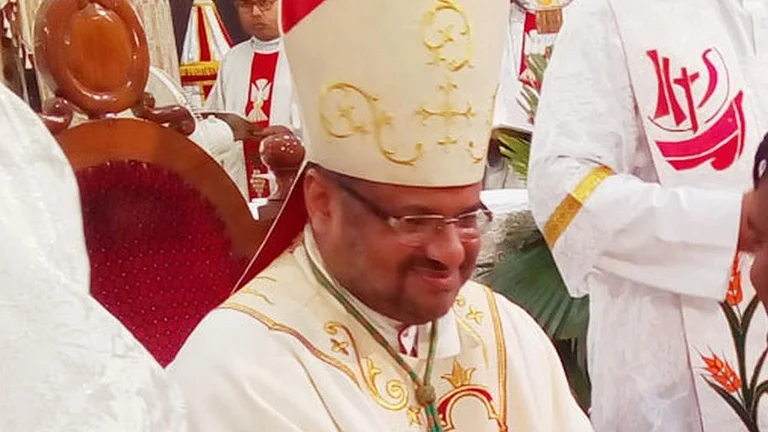As I head out, Chandigarh seems like the perfect film location with trees in full bloom in the early month of March. My car runs on a wide open road and returning to it feels rather picturesque. I was coming back here after five years. On a project of rediscovery, with my cousins and parents, I looked around for places to visit, opening even their eyes to a Chandigarh that they had only heard of but never visited.
So, in our white SUV, we travelled the different zones of Chandigarh, beginning from the head, or Sector 1, to the southern sectors.
But first, a bit about the past and roots of this city. Chandigarh is an amalgamation of two powerful words, 'chandi' referring to the goddess Chandi, and 'garh' meaning house. It is a fairly new city, constructed in the 1950s, to serve as a replacement for Lahore as Punjab’s capital city. Le Corbusier, the Swiss architect, built this modern city in hopes of maintaining a balance between nature and human settlements. Apart from planning the city into sectors or self-sustained neighborhoods, Le Corbusier was also responsible for designing other buildings, such as the Capitol Complex in Sector 1. This structure has recently been recognised as a UNESCO World Heritage Site. It consists of multiple governing buildings - the High Court, the Legislative Assembly and Secretariat, which have restricted access to the public. Others such as Tower of Shadows, Open Hand Monument and Martyrs’ Hill are open to everyone, but the common route requires permission passes from either the security or Tourist Center. I never went past that route because the tourist center was closed at that time.
The unique charm of Chandigarh is reflected in its everyday architectural buildings such as government schools, parks, university campuses and residences of bureaucrats. Most people have heard of Corbusier but did you know that one of the most famous residences in Chandigarh, now converted into a museum, belonged to Pierre Jeannerat, Le Corbusier’s architect cousin? I visited this museum on my hunt to find alternate tourist destinations in the city. The Pierre Jeannerat museum in Sector 5 perfectly fit the bill. Located in the wealthiest part of the city, this museum is located in the residential area and can easily be mistaken as a residence. A small Smart City round tag is stuck on the gate. When you compare the residence with other residential complexes, you will find the difference in its style and elegance. It is surrounded by lawns and a back garden. The front portion is shielded by a stone wall to prevent penetrating sun rays. The red bricks, used in all government houses, are used in some parts of the residence innovatively. There are alternate gaps between these vertical and horizontally aligned bricks such that it traps the hot air outside. All this is genuinely fascinating for even a lay travel blogger. As I enter inside, I am welcomed by the well-shaded inner sanctum of the house. The entire house, divided into three rooms, a dining area and a kitchen on the ground floor are lit only by sunshine without any heat disturbing the serenity. The walls are decorated with Pierre Jeannerat’s achievements and we’ll get to know that he has contributed a lot - from Punjab University’s library to playgrounds in nursery school in Sector 7. Behind the residence, on the porch, I saw a structure which resembles a canoe boat. On asking the caretaker, we found that it is a boat designed by Le Corbusier and Pierre Jeannerat!
Saying goodbye to the area - the beautiful trees, open space, and neatly spread bougainvillea in the gardens - was hard because I probably won’t have any reason to visit this place again in the future.
Next, we went to explore another of Pierre Jeannerat’s buildings, Gandhi Bhawan in Punjab University, Sector 14. Gandhi Bhawan was built with the vision of spreading the teachings and values of Gandhi. Located beside the Fine Arts Museum, usually the building is surrounded by water but probably due to the summer season water wasn’t anywhere to be seen. Even though I reached the place quite early, I did not see any visitor or student near this building. A board with the words “Truth is God” hangs above the door.
Just after one kilometer of Gandhi Bhawan comes the Student Center where we had some yummy food at very low prices. Although their Oreo Shake is considered a must-try in the student center (or stuC as it is popularly known), I ordered a fresh lime soda to battle the heatwave. The open area of the student center is surrounded by palm trees and some seating benches. Some specialities that they are known for are their chola bhatura, paranthe, thali (Rs65 only), rajma chawal and momos. As it was early morning, I resisted the tempting aroma of these freshly cooked specialties, and instead filled my stomach with cheese patties and grilled cheese sandwiches.

On another late evening trip, I visited the street food joints selling Amritsari kulcha in Sector 9. It was crispier with its onion stuffing, maybe because it was made on a tandoor (a clay oven used in Northern India) and Punjabi masala. As the seating option was not abundant, we sat and ate in the car. It was nevertheless tasty and a must-try street food to eat in Chandigarh.
Next up in this list is the market of Sector 22, a cheaper alternative to shopping malls. It is considered the oldest market in Chandigarh, and as per my mother’s words it is "where you can find anything at any price’". This market is also home to Punjabi crafts such as Patiala jootis and Phulkari dupattas, probably the only remaining street market in Chandigarh dealing in traditionalcrafts. The other options are luxurious and thus out of access for many people. Ranging from low to high prices, this market gives me plenty of options to choose Phulkari works. Sector 17 is a shopping plaza but it is more of a leisure-time open space for walking and window shopping. There are stores that keep Punjabi handicrafts such as Khadi, and Phulkari Emporium in Sector 17 shopping plaza. I have seen students my age skateboarding near the abandoned buildings, and people roller skating on the floors. As this sector is the only one without residential complexes, you will find people from all walks of life, and backgrounds taking a walk around the shopping plaza or sell their items. I once interviewed a cobbler sitting near the closed Neelam theater and found that he came to Chandigarh in hopes of employment from Uttarakhand.
Near the Neelam theater, where so many cobblers like him sit during the day, I found the Indian Coffee House full of customers. Indian Coffee House is one of the oldest cafes in Chandigarh, set up by cooperative workers societies.
Even after five years, the crowded ambience of this cafe didn’t die out. Instead with new facilities like AC, it seems to attract its loyal customers even more. “What is the secret?” I asked my father who visited it after five years, and he replied “It is the price.” Looking at the menu board and our bill by the end of our meal, it was truly exhilarating to eat food as big as a family meal under Rs500 during such high inflation times.

























